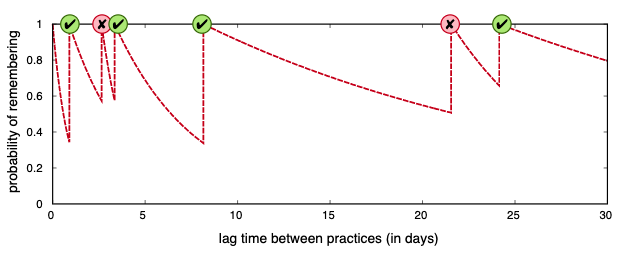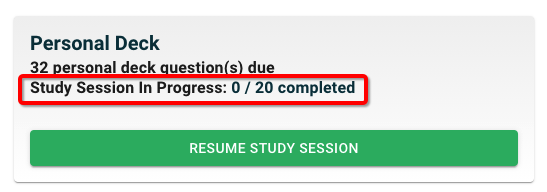Personal Deck
Learn more about the Personal Deck and how it works
Josh
Last Update 4 ปีที่แล้ว
The Personal Deck is Podsie's most important feature. Here's how it works:
- Each student has their own Personal Deck.
- When students complete an assignment, by default, all the questions from that assignment are inserted into their Personal Deck.
- Then, based on how students previously performed on each question, the Personal Deck will determine when the student needs to review that question again.
- As a result, each student will get a personalized review experience based on their prior performance.
Example of how the Personal Deck works
- Let's say that a teacher assigns an assignment that has two questions: the first question is on simplifying fractions, and the second question is on one-step equations.
- When a student completes that assignment, both questions will go into that student's Personal Deck. Both of those questions will be "due" at a future date. How soon a question shows up again is determined by each student's prior performance on that question.
- So, let's say that John struggled with the question on simplifying fractions, while acing the question on one-step equations. In this case, the question on simplifying fractions will show up earlier in the Personal Deck (in about 1 day). Meanwhile, the question on solving one-step equations would show up later (in about 1 week).
- If a student consistently gets a question correct, then the question will get scheduled for review at an increasingly later date. For example, let's say that a week later, the question on solving one-step equations (which John previously got correct) shows up, and he gets it correct again. When he got it correct the first time, he saw it about 1 week later. Now that he got correct a second time in a row, he would see it at an even later date (about 3 weeks later). If he gets it correct a third time in a row, then the next review would be scheduled at an even later date (about 2 months).
In summary, Podsie uses an expanding interval scheduling algorithm, which visually looks like:

Over time, each student will end up reviewing the questions that they most need to review at that moment.
Personal Deck Study Sessions
Whenever a student starts studying their Personal Decks, they start a Personal Deck Study Session:

By default, a Study Session is a maximum of 20 questions. In the example above, there are 32 questions currently due in the personal deck. If a student starts a Study Session, then only the first 20 questions will be pulled into the session:

In this case, the student would not see the other remaining 12 questions until the student is done with the 20 questions in the current Study Session.

